Art collecting has been a great chapter in the life of Leslie — an artist herself — and Michael Weissman for over two decades now. They have built an art collection with a focus on emerging and early-career artists. Besides collecting the artworks, Leslie and Michael enjoy developing relationships with emerging artists and maintaining a connection with them as they collectively grow. Leslie is currently on the board for Fountainhead, an art organization in Miami that nurtures and exposes artists, and a member of the executive committee as well as a board member of the Rema Hort Mann Foundation.
LARRY’S LIST had a conversation with the collector couple on why they hope to eventually gift most of the pieces from our collection; their experience of working on the art collection as a family; why meeting the artists in their collection means everything to them; the art-world pet peeve in their opinion; and three emerging artists we should watch out for.
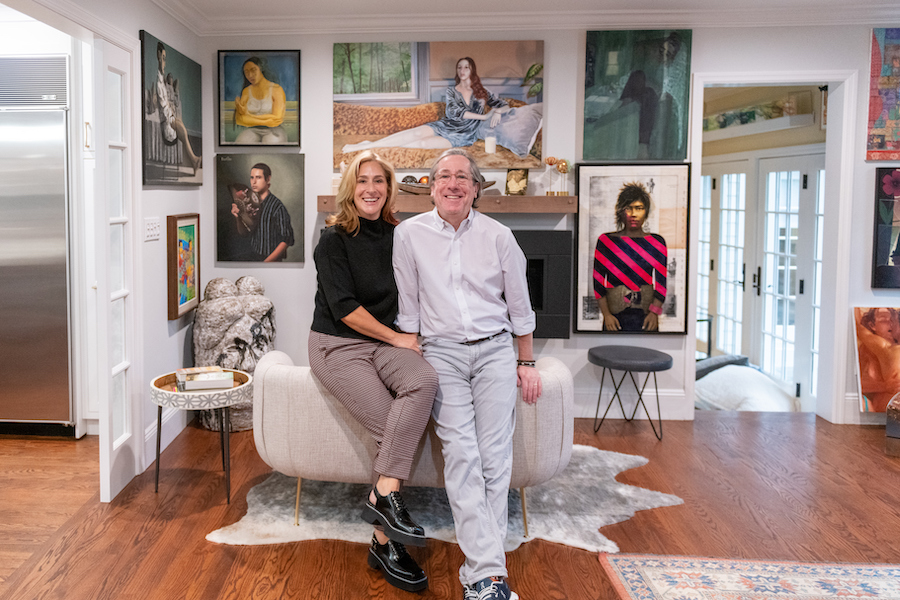
Collecting
What made you want to start collecting art? What is the main motivation behind your collecting?
Both of us had art and collecting as part of our DNA. Between family members on museum boards, working artists in our families, and collectors among us, we loved being immersed in the arts. We attended a benefit for the Neuberger Museum celebrating a milestone where artists were asked to create a work from a fixed amount of clay. We acquired a work by Cleve Grey, which was hung over our fireplace for the following 15 years. From there we began to visit galleries and artists studios and developed a passion for supporting emerging artists and their galleries. As for motivation behind collecting it’s all about our ability to support the artists and their galleries. We want to be part of their journey and feel that, in our own small way, we are having a positive impact on their abilities to achieve their respective goals.
When did you fall in love with a piece of art? What was it?
Having grown up surrounded by the arts, we both had a great deal of experience to draw from. Art was always discussed in our homes, whether it was a trip to the Met where Leslie’s parents purchased a reproduction of her favorite work, Joan of Arc by Jules Bastien-Lepage or Michael’s mom having Gordon Parks and his family to their home after an opening of his work at her gallery at the White Plains Library. Art has always been a common thread, which is why our main collecting principle is to buy what we love and love the art in our collection.
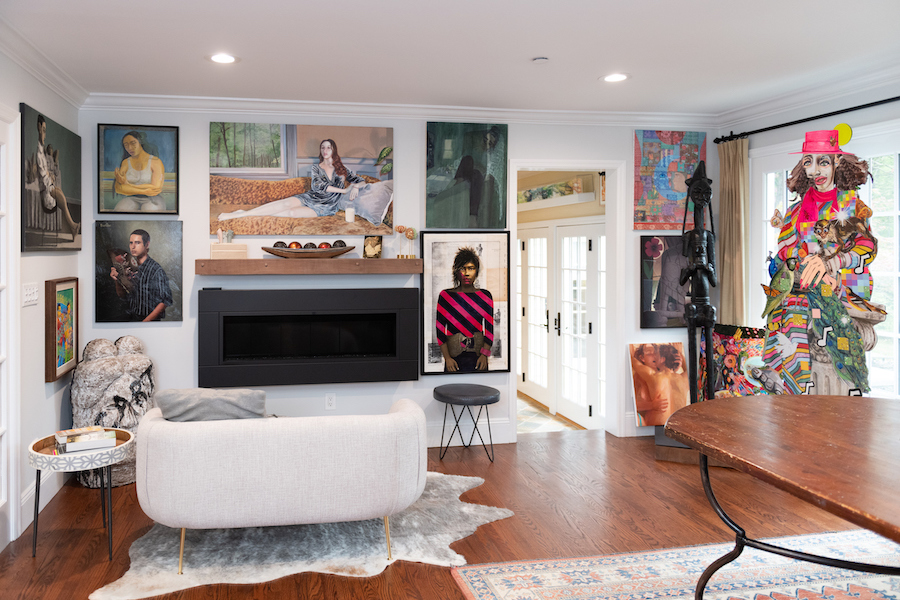
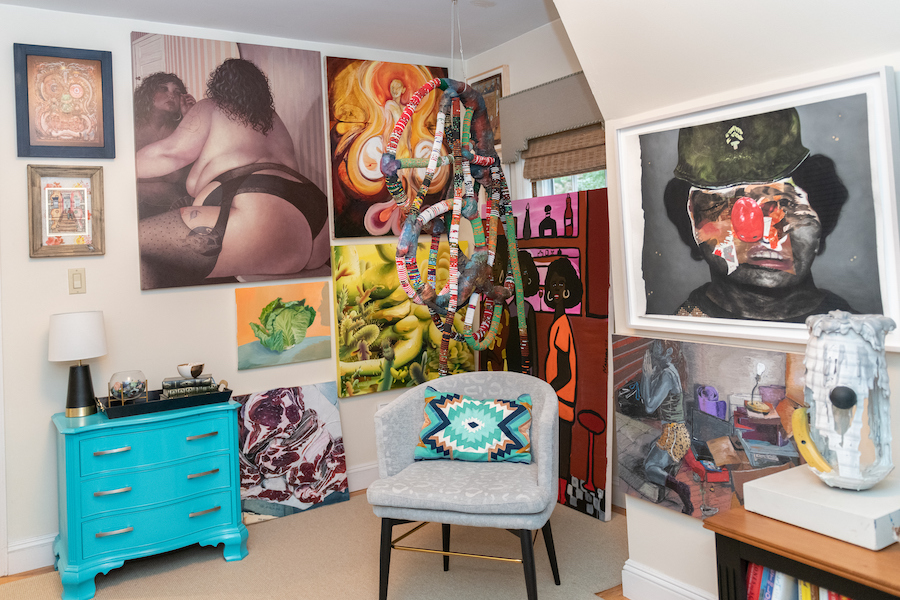
What is your focus regarding the artists in your collection? International or local artists, emerging or renowned artists?
We have a great respect for renowned artists and artists who are historically relevant as they defined new movements and innovative approaches to technique and imagery. However, our passion is collecting and developing relationships with emerging artists and maintaining a connection with them as we collectively grow. We often collect works by an emerging artist as their practice develop and they continue to explore our shared humanity and collective relationship with social, political, and philosophical norms. Emerging artists are our pictorial documentarians, they are giving us a perspective and platform to discuss and evaluate our living history.
What type of art that has consistently attracted you? What is the theme that unites all the works you have acquired?
Our collection is very diverse, and we have one underlying principle that unities our collection which is we buy what we love. We have cycled through conceptual, figurative, and abstract, and mark making work, in both paintings, sculpture and assemblage. All the works have significant narrative threads, and we love being able to return to a work and consider a new conversation each time.
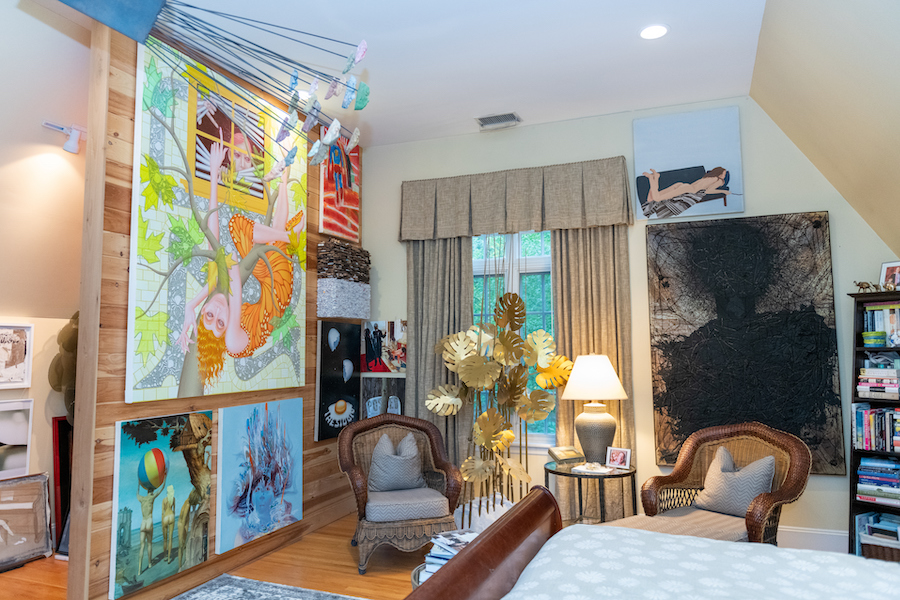
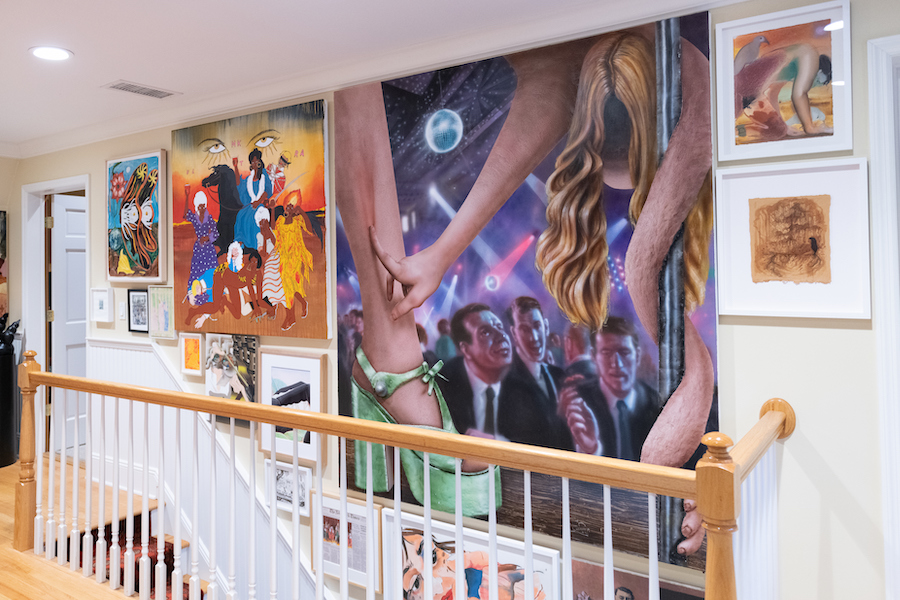
What were the first and the latest artworks you purchased?
The first significant acquisition was a landscape painting by Wolf Kahn. Michael’s parents owned a work by Kahn that hung over their fireplace that he loved and had always wanted one of his own. Our latest purchases are a sculpture by Vanessa German from Mother Gallery, Julie Curtiss from Anton Kern, Jameson Green from Derek Eller, Mark Yang from Half Gallery Allie McGee from Harper’s. JJ Manford from The Hole, Thalia Petersen from Nicodim.
How many artworks do you own? Where do you display your collection?
Currently, we have approximately 800 works in our collection and try to keep a good percentage on display in our home. We live with our art, and as you can see our entire home is in salon style. It’s important for work to be displayed. We never acquire a work with the idea in mind of where it will be hung. When it arrives, we move and adjust to make room for new works, it’s like a living Rubik’s Cube. We also always promise the artists we collect that we are open to loaning works, so usually there are a dozen or so pieces out in museums or other exhibitions.
Have you ever presented your art collection publicly?
It is very important for artists to have as much exposure as possible and not only live on walls in private collections. We, therefore, are always responsive to loan requests from both domestic and international museums, galleries, and other institutions and venues that would like to display a work from our collection.
Our intention is to ultimately gift most of the pieces from our collection. We want to share our passion with future generations and view our collection as our legacy that we hope will have a lasting impact.
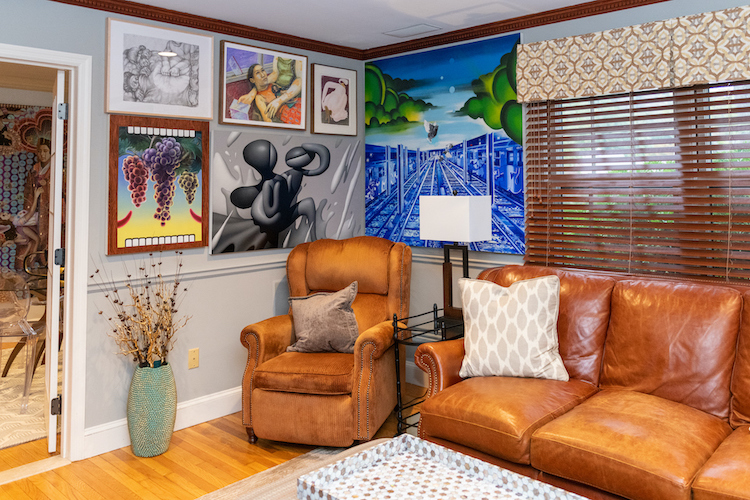
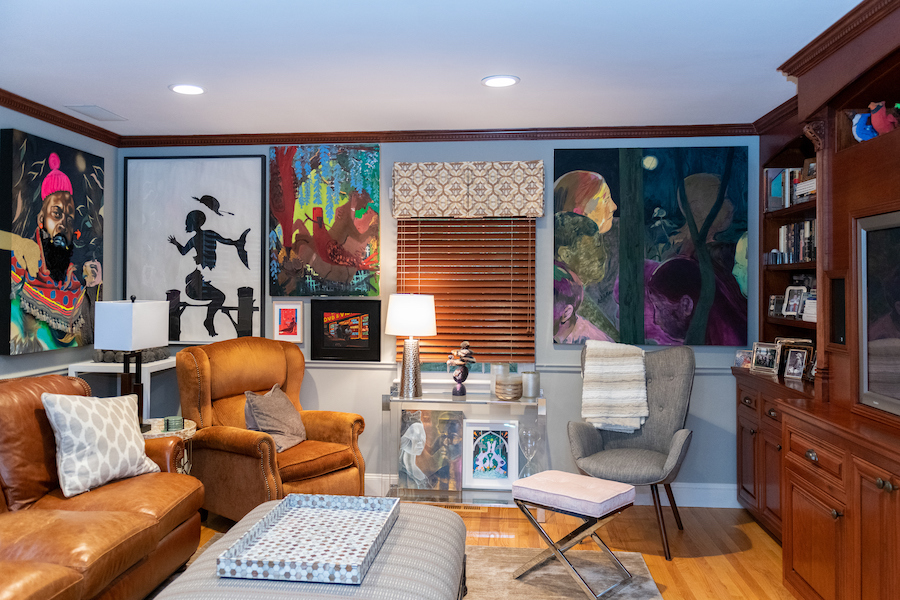
What considerations guide you to make a purchase?
It comes down to one simple consideration — whether we love the work. If we love a piece of art, we will do everything we can to try to acquire it. We do not limit ourselves to any one style, like figurative or abstraction, or a specific genre. As a result, our collection is extremely eclectic. Our adult children (and now with their significant others), who have been exposed to art their whole lives and collect themselves, are an integral part of our collecting process.
When we get a preview or are shown a work, or find an artist on Instagram, we share the image in our family chat and discuss if we should acquire it. If a gallery asks us to pick our top three, we will do this independently and share with each other; it’s uncanny, but we almost always have among us two overlapping top works. Working on our collection as a family is incredibly rewarding and brings us a great deal of joy.
What is your most treasured artwork?
We love art that has a story and is meaningful on a global level, which is why we buy what we love. The work “Raise Up” by Hank Willis Thomas is an example of how a specific work that addresses a difficult chapter in our human history can have implications and promote discourse with a new audience while illustrating how the message and story is applicable to multiple experiences. So much of the art in our collection speaks to these types of shared experiences — be they hardship, living in the diaspora, family dynamics, joyful celebrations, environmental turbulence, or geopolitical issues. Being stewards of these works enables us to promote conversations about our times and the historical relevance they have.
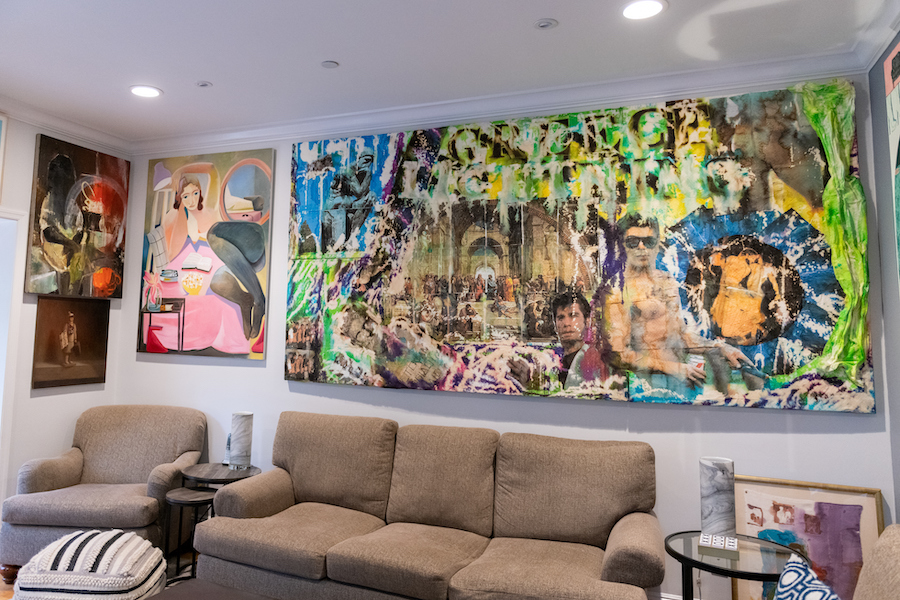
How important is it for you to meet the artists who created the artwork?
Meeting the artists in our collection means everything to us. Without meeting the artists, collecting would not be nearly as rewarding to us. We love doing studio visits, and we have an open door policy to all those involved in the art life cycle: artists, collectors, gallerists, museum directors.
We are thrilled when artists visit our home to see the collection and their work, It’s amazing when we have serendipitously installed one artist next to a classmate, studio-mate, or best friend, and artists love taking pictures of their own works and those of their connections when they visit our collection.
We are headed out to LA in February for Frieze specifically to accompany galleries on studio visits; we have added a significant number of West Coast artists in the last several years, so we are excited to meet them in person and to learn more about their studio practice and have a dialogue about their work and philosophy.
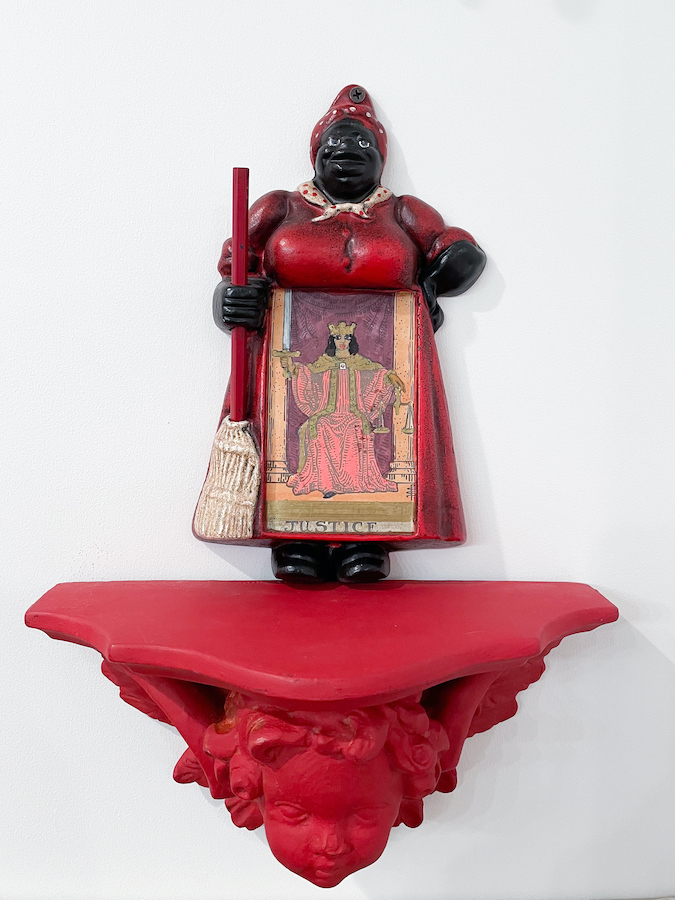
The Art World
What do you think is the art-world pet peeve?
Art today, more than in the past, is viewed as an asset class, similar to real estate, stocks, bonds, and other investment vehicles. With that the collector base has expanded both exponentially and globally. We marvel when reviewing the lots offered up at auction by the top 3 how they label certain works, which were made in 2020/2021, are from “important collections”. Invariably, these works were created by the “hottest” emerging artists that are almost impossible to purchase given their long wait lists. Clearly, whomever purchased these works had only one intention — profiting from their status — while preventing other collectors the opportunity to acquire the work. Yet, they are considered “important collectors”. We would love to see more galleries require collectors sign a no-resale agreement.
Who inspires you the most in the art world?
Artists who consistently challenge themselves and are willing to take risks are an inspiration. It can be very easy for an artist to repeat the same model once they have achieved success. However, as a pictorial story teller with unique and shared experiences, artists who continue to push themselves in how they communicate their current perspective are very exciting to us. Our hope is to acquire multiple works by many artists in our collection as they evolve their practices and push themselves over time.
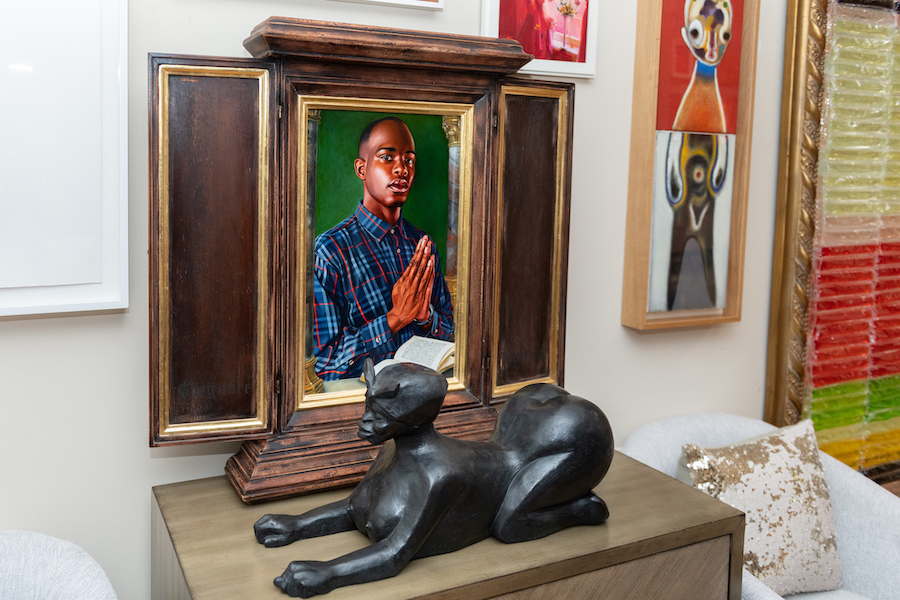
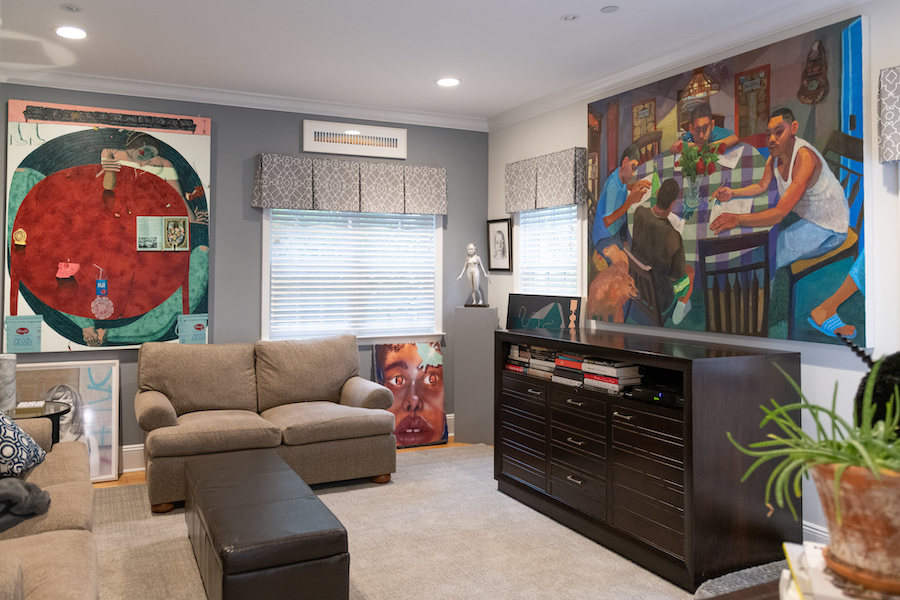
How do you engage with art besides collecting?
The entire life cycle of the creative experience and those organizations that support artists are an integral part of what excites us about the art world. We are deeply involved with the Rema Hort Mann Foundation with its dedication to both supporting emerging artists coupled with the humanitarian mission of supporting comfort care for cancer patients. Additionally, we sit on the board/executive committee of Fountainhead in Miami. Fountainhead, founded by Kathryn and Dan Mikesell, is an amazing residency that nurtures and exposes artists to collectors, museums, and promotes cohort groups in a collective working environment that offers a supportive and engaging live/work environment. These are all important factors that influence our collecting focus. As a working artist, Leslie is also able to bring specific technical and professional advice to conversations with many of the emerging artists we have developed close relationships with. Both of us spend a great deal of time meeting with and talking to an ever-growing network of artists and their friends, who are looking for guidance on the professional side of their studio practice. We also love one-on-one time with gallery directors to discuss art-world hot topics, jointly identifying emerging artists, and sharing collecting strategies. Recently, we have been working with the Aldrich Museum, which, as a non-collecting institution, is focused on bringing mostly emerging and early-career artists to the local level so that everyone can engage in art in a meaningful way.
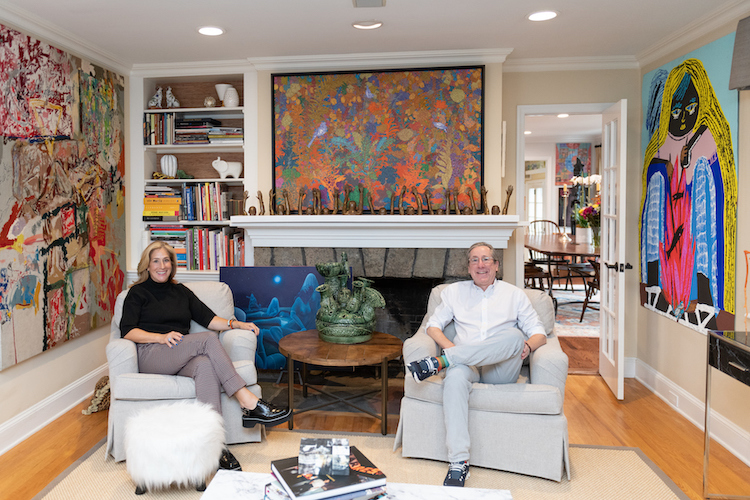
Can you name three emerging artists who should be on our radar?
Natia Lemay, Astrid Terrazas and Monsieur Zohore are three artists whom we believe to be all doing unique work, and who are also fantastic people.
What are you especially excited about in regard to art in the next 12 months?
Every day, we feel like we make a new discovery of an artist we think would be a perfect addition to our collection. Instagram has proven to be an important tool, but ultimately it’s a result of the galleries we work closely with who are constantly bringing to our attention incredible talents that they have identified, that they feel we should consider. It never ceases to amaze us how many talented artists are out there that are creating unique work that leave us in awe.
All images: photograph by Carolyn Simpson; courtesy of Weissman Family Collection
Instagram: @weissman_family_collection, @lbweissman
A selection of artists Leslie and Michael collect:
Allison Zuckerman
Hyegyeong Choi
Kehinde Wiley
Monsieur Zohore
Tunji Adeniyi-Jones
By Ricko Leung





